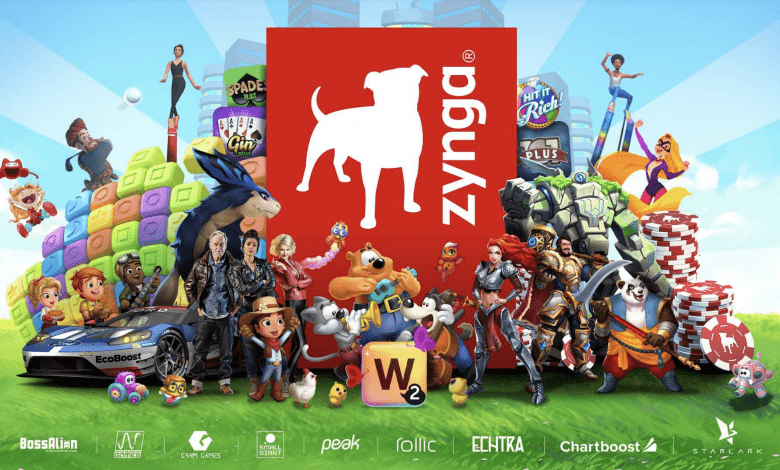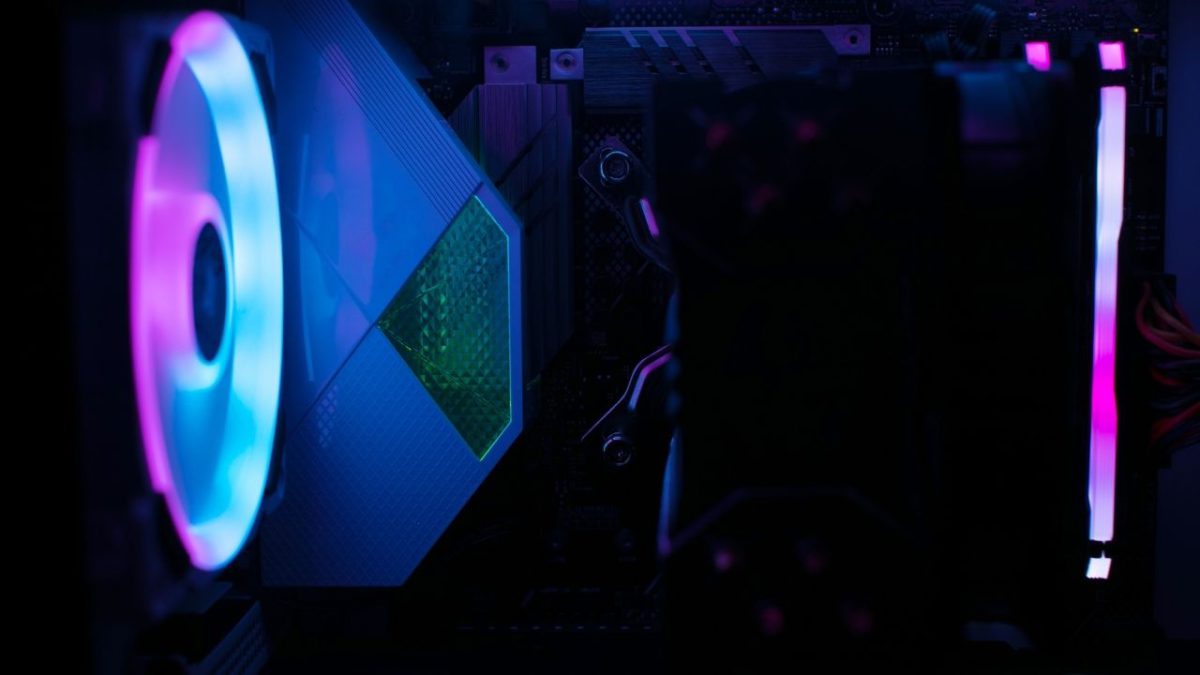The Rise of Play-to-Earn NFT Games And Top 10 Things That Make Them Unique
The gaming landscape is undergoing a significant transformation with the emergence of NFT (Non-Fungible Token) games. These games integrate blockchain technology and NFTs, creating a new paradigm of “Play-to-Earn” experiences where players can own in-game assets, participate in the game’s economy, and even potentially earn real-world rewards. Let’s delve into the world of NFT games, exploring their core components and the unique characteristics that set them apart from traditional games.
Understanding the Fundamentals of NFT Games
At their core, NFT games are still video games, offering players a variety of challenges, storylines, and immersive experiences. However, they incorporate several key elements that utilize blockchain technology and NFTs:
- In-game assets as NFTs: Traditional games offer virtual items like weapons, armor, or cosmetic upgrades. In NFT games, these items are tokenized as NFTs, creating unique digital ownership records stored on the blockchain. This allows players to truly own these assets, not just have access to them within the game.
- Play-to-Earn Model: NFT games incentivize players through a “Play-to-Earn” model. By participating in the game, completing quests, winning battles, or breeding virtual creatures, players can earn in-game currencies represented as tokens. These tokens can have real-world value and can be traded on cryptocurrency exchanges.
- Decentralized Ownership and Marketplaces: NFT games often leverage decentralized marketplaces for players to buy, sell, and trade their NFT assets. This empowers players to control their in-game economies and potentially profit from the value of their NFTs.
- Community Governance: Some NFT games explore Decentralized Autonomous Organizations (DAOs) for community governance. Players holding specific NFTs can participate in voting on game development decisions, impacting the direction and evolution of the game.
Also, read- Top 10 Important Difference Between Buying At Mint Vs. Secondary Market Strategies For NFT Profits
What Makes NFT Games Unique?
NFT games are revolutionizing the gaming landscape by introducing concepts of ownership and monetization not seen before. Here’s a breakdown of the top 10 features that set NFT games apart:
-
True Ownership of In-Game Items: Forget items disappearing when you stop playing. In NFT games, characters, weapons, or virtual land are represented by NFTs, giving players verifiable ownership on the blockchain. This allows them to freely trade these assets with other players on secondary marketplaces, potentially generating real-world income.
- Example: In Axie Infinity, players own adorable creatures called Axies as NFTs. They can breed, battle, and trade these Axies on the marketplace, with some rare Axies fetching thousands of dollars.
-
Play-to-Earn Model: NFT games break the traditional pay-to-win model. Here, players can earn in-game currencies or NFT rewards through gameplay. These rewards can be used to upgrade characters, purchase new items, or be sold on marketplaces for real-world profit.
- Example: In The Sandbox, players can earn SAND tokens by completing quests, creating voxel assets, or renting out their virtual land. These tokens can be used to buy items, participate in governance, or be cashed out for fiat currency.
-
Interoperable Assets: Imagine using your battle-hardened sword across different games. Some NFT games are exploring interoperability, allowing players to use their NFT assets across various blockchain-based games. This opens up a vast virtual ecosystem where items retain value and utility.
- Example: Illuvium, an upcoming open-world RPG, aims for interoperability. Players will be able to capture NFT creatures, train them, and potentially use them in battles across different compatible games.
-
Community Ownership and Governance: NFT games can leverage DAOs (Decentralized Autonomous Organizations) to empower players. By holding governance tokens (NFTs), players can vote on game development decisions, influencing the future of the game and potentially increasing its value.
- Example: Decentraland, a virtual world built on the Ethereum blockchain, utilizes a DAO to govern in-game policies and the overall development roadmap. LAND owners (NFTs) hold voting power, shaping the future of the virtual world.
-
Unique Digital Identities: Incorporating NFTs can create a more personal connection to in-game avatars. NFT avatars can represent a player’s unique identity across different games, potentially accumulating value and carrying over achievements and customization options.
- Example: Gala Games is a platform developing various NFT-integrated games. Players can own NFT Gala avatars that they can use across different Gala Games, potentially unlocking exclusive features or in-game benefits.
-
Enhanced In-Game Economies: NFTs introduce the concept of scarcity and value to digital assets. This can create a thriving in-game economy where players can buy, sell, and trade items, fostering a sense of investment and potentially generating revenue streams within the game itself.
- Example: Gods Unchained, a digital card game, utilizes NFT cards. Players can trade these cards on a marketplace, with rare cards reaching significant value due to their limited supply and player demand.
-
Increased Player Engagement: The concept of ownership and potential real-world value can incentivize deeper engagement. Players might be more invested in playing, collecting, and strategically using their NFT assets to maximize their value and potential earnings.
- Example: Compared to traditional mobile games where items disappear upon uninstalling, Axie Infinity’s NFT Axies incentivize players to nurture, train, and potentially breed them for better performance and higher marketplace value, leading to longer playtime and deeper engagement.
-
Content Creation Opportunities: NFT games empower players to become creators. Games might allow players to create and sell in-game items, art, or even experiences (like virtual land plots) as NFTs, fostering a creator economy within the game.
- Example: The Sandbox allows players to create voxel assets and experiences within their LAND NFTs. These creations can be uploaded to the marketplace and sold to other players, enabling players to monetize their creativity and contribute to the overall ecosystem.
-
Real-World Asset Integration: While still in its early stages, some NFT games are exploring bridging the gap between digital and physical worlds. Imagine your rare NFT weapon having a real-world collectible counterpart. This adds a new layer of value and collectability to NFT assets.
- Example: Several blockchain projects are experimenting with linking physical trading cards or merchandise with in-game NFT counterparts, potentially creating a more holistic collecting experience that bridges the physical and digital divide.
-
Evolving Game Design: NFT integration opens doors for innovative game design. Games can introduce features like lending NFT assets, staking for rewards, or integrating player-created content through NFTs. This allows for deeper strategic elements and fosters a sense of community ownership within the game world.
Exciting times ahead!
Joining hands with the creative genius, D-O-M @sctreacy, @jtuck9 is unveiling an iconic moment—the 66-yard field goal—as an exclusive NFT on @cryptocomnft.
The game is about to change! 🚀#TheKick #TuckerNFTLaunch pic.twitter.com/9Xk98z1ia1
— Crypto.com NFT (@cryptocomnft) March 14, 2024
Benefits and Challenges of NFT Games
Benefits:
- Empowering Players: True ownership and the potential for earning income can empower players, giving them a stake in the game’s success and a way to monetize their time and skills.
- New Economic Opportunities: NFT games create new economic opportunities for players, artists, and developers within the gaming ecosystem.
- Increased Engagement and Community Building: The “Play-to-Earn” model and community governance can foster deeper player engagement and a stronger sense of community ownership within the game.
- Unique Digital Ownership: NFT games provide a way for players to truly own and manage their in-game assets, creating valuable digital collectibles.
Challenges:
- Volatility and Uncertainty: The value of in-game tokens and NFTs can be volatile, leading to financial risks for players who invest in them.
- Scalability and Sustainability: The current scalability limitations of some blockchain platforms can hinder the user experience for NFT games with large player bases.
- Pay-to-Win Concerns: Some models might prioritize monetization over gameplay, potentially creating “pay-to-win” situations where players who invest real money have an unfair advantage.
- Environmental Concerns: The energy consumption associated with some blockchain platforms raises environmental concerns for those participating in NFT games.
The Evolving Landscape of NFT Games
The NFT gaming space is still in its early stages and is rapidly evolving. Here are some potential future trends:
- Focus on Gameplay and User Experience: While the earning potential is attractive, successful NFT games will need to prioritize engaging gameplay experiences to retain players in the long run.
- Improved Interoperability and Asset Portability: The ability to use NFTs across different games will become increasingly important, creating a more unified and valuable digital asset ecosystem.
- Sustainable Blockchain Solutions: The development of more energy-efficient blockchain platforms will be crucial for the long-term sustainability of NFT games.
- Regulation and Consumer Protection: Regulatory frameworks might emerge to address potential issues like scams, market manipulation, and player protection within the NFT gaming space.
- Integration with Traditional Gaming: We might see a convergence between traditional gaming and NFT mechanics, offering players a wider range of experiences with potential earning opportunities.
- The Rise of the Metaverse: NFT games could play a key role in the development of the metaverse, creating virtual worlds where players can own digital assets, interact with others, and participate in a diverse range of activities.
The Future of NFT Games: A Glimpse into a More Interconnected and Player-Driven Experience
The world of NFT gaming is still in its nascent stages, but its potential to revolutionize the gaming industry is undeniable. As technology matures and regulatory frameworks are established, we can expect a future where NFT mechanics become more widely adopted, fostering a more interconnected and player-driven gaming experience. Here’s a detailed exploration of what the future holds for NFT games:
1. The Rise of Interoperable Gaming Experiences:
Imagine seamlessly carrying your battle-hardened NFT sword from Axie Infinity to conquer foes in The Sandbox. Interoperability is a game-changer. Blockchain technology allows for the creation of interconnected NFT ecosystems, where players can utilize their in-game assets across various blockchain-based games. This fosters a sense of continuity and expands the utility of NFT assets.
-
The Metaverse Takes Center Stage: The concept of a persistent, interconnected virtual world known as the metaverse is becoming increasingly intertwined with NFT games. Interoperable NFTs will be the building blocks of a thriving metaverse, where players can own virtual land parcels, participate in social gatherings, and even conduct business across different virtual experiences.
-
Breaking Down the Walls Between Games: Studios and developers will likely collaborate more to create games with interoperable NFT functionality. This will allow players to build a collection of valuable assets usable across a wider range of experiences, increasing overall engagement and potentially blurring the lines between individual games.
2. The Evolving Role of Players:
NFT games empower players by giving them a stake in the virtual world’s economy and potentially even its governance. As the technology matures, we can expect to see a paradigm shift in the role of players:
-
Player-Driven Economies: NFT games with robust in-game economies will allow players to not only earn through gameplay but also potentially influence the game’s development. Imagine communities voting on new features or content creation through DAO structures facilitated by NFT ownership.
-
The Rise of Play-and-Earn 2.0: The play-to-earn model will likely evolve beyond simply grinding for rewards. Games will focus on creating engaging experiences with sustainable economies that incentivize creative player contributions and long-term engagement, potentially through features like: * NFT Rentals: Players could rent out their NFT assets (like virtual land or characters) to other players for a fee, generating passive income within the game. * NFT-based Scholarships: More established players could sponsor new players by lending them NFTs to get started, fostering a mentor-mentee system within the game’s community.
-
Evolving Ownership Models: NFT ownership might extend beyond just in-game items. Imagine owning shares of in-game businesses or even co-operatively creating and governing specific regions within the metaverse through NFT ownership. This would blur the lines between traditional gaming and a more participatory, ownership-based experience.
3. Technological Advancements and Regulatory Clarity:
The future of NFT games hinges on advancements in underlying technologies and a clearer regulatory landscape. Here’s what we can expect:
-
Scalability Solutions: Current blockchain limitations like scalability and transaction fees can hinder mass adoption. The development of Layer 2 solutions and more efficient blockchain protocols will be crucial for supporting a wider user base in NFT games.
-
Focus on Sustainability: The environmental impact of certain blockchains is a major concern. The adoption of eco-friendly blockchain technologies will be essential for the long-term viability of NFT games and the broader gaming industry.
-
Regulatory Frameworks: Clear regulations regarding NFTs and in-game economies are still being formulated. As regulatory frameworks evolve, it will provide a more stable environment for NFT game development and investment, fostering trust and wider adoption.
The future of NFT games is brimming with possibilities. As technology overcomes challenges, regulations are established, and the concept of interoperability takes hold, we can expect a future where NFT games become a cornerstone of a more interconnected and player-driven gaming experience. This future promises deeper player engagement, innovative game design, and potentially even new revenue streams for players and creators alike. However, addressing concerns around sustainability and ensuring responsible development will be paramount for NFT games to reach their full potential and revolutionize the gaming landscape.
Conclusion
NFT games represent a paradigm shift in the gaming industry, offering players ownership, earning potential, and a sense of community governance. While challenges like volatility, scalability, and environmental concerns remain, NFT games have the potential to create a more engaging, rewarding, and player-centric gaming experience. As the technology matures, regulations evolve, and the focus remains on creating high-quality gameplay, NFT games have the potential to revolutionize the way we play, earn, and interact within the virtual world.
Stay informed with daily updates from Blockchain Magazine on Google News. Click here to follow us and mark as favorite: [Blockchain Magazine on Google News].
Get Blockchain Insights In Inbox
Stay ahead of the curve with expert analysis and market updates.
latest from tech
Disclaimer: Any post shared by a third-party agency are sponsored and Blockchain Magazine has no views on any such posts. The views and opinions expressed in this post are those of the clients and do not necessarily reflect the official policy or position of Blockchain Magazine. The information provided in this post is for informational purposes only and should not be considered as financial, investment, or professional advice. Blockchain Magazine does not endorse or promote any specific products, services, or companies mentioned in this posts. Readers are encouraged to conduct their own research and consult with a qualified professional before making any financial decisions. The featured image used is just a creative depiction of the title and it does not intend to hurt sentiments of any person or institution. If it hurts anyone sentiments, please do not hesitate to reach out to Blockchain Magazine.

 Bitcoin
Bitcoin  Ethereum
Ethereum  XRP
XRP  Tether
Tether  Solana
Solana  Dogecoin
Dogecoin  USDC
USDC  Cardano
Cardano  Lido Staked Ether
Lido Staked Ether  TRON
TRON  Chainlink
Chainlink  Avalanche
Avalanche  Sui
Sui  Wrapped stETH
Wrapped stETH  Wrapped Bitcoin
Wrapped Bitcoin  Stellar
Stellar  Toncoin
Toncoin  Hedera
Hedera  Shiba Inu
Shiba Inu  WETH
WETH  Polkadot
Polkadot  LEO Token
LEO Token  Bitcoin Cash
Bitcoin Cash  Litecoin
Litecoin  Bitget Token
Bitget Token  Official Trump
Official Trump  Hyperliquid
Hyperliquid  Uniswap
Uniswap  Pepe
Pepe  Wrapped eETH
Wrapped eETH  USDS
USDS  NEAR Protocol
NEAR Protocol  Ethena USDe
Ethena USDe  Aave
Aave  Aptos
Aptos  Internet Computer
Internet Computer  Ondo
Ondo  WhiteBIT Coin
WhiteBIT Coin  Monero
Monero  Ethereum Classic
Ethereum Classic  Cronos
Cronos  POL (ex-MATIC)
POL (ex-MATIC)  Mantle
Mantle  Render
Render  Dai
Dai  OKB
OKB  Algorand
Algorand  Bittensor
Bittensor 



